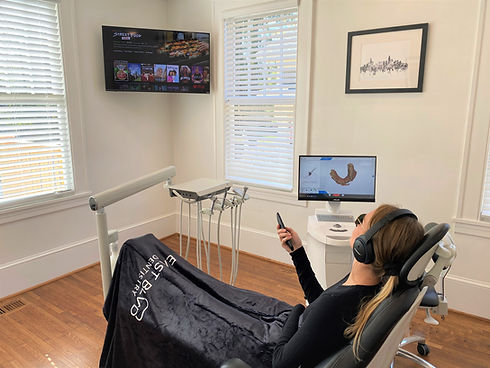
Extraction procedure, aftercare & recovery
TOOTH EXTRACTION
Excessive tooth decay, tooth infection, and crowding can all require a tooth extraction. Those who get braces may need one or two teeth removed to provide room for their other teeth as they shift into place. Additionally, those who are undergoing chemotherapy or are about to have an organ transplant may need compromised teeth removed in order to keep their mouth healthy.
Tooth extraction is performed by a dentist or oral surgeon and is a relatively quick outpatient procedure with either local, general, intravenous anesthesia, or a combination. Removing visible teeth is a simple extraction. Teeth that are broken, below the surface, or impacted require a more involved procedure.

“Sedation is a must when you have dental anxiety.
Dr. Jalali made me feel comfortable and relaxed during my entire visit"
Actual Patient - East Blvd Dentistry

Our Personalized Solutions for You
Your tooth extraction will either be simple or surgical, depending on whether your tooth is visible or impacted.
Simple extraction
You will receive a local anesthetic, which numbs the area around your tooth so you’ll feel only pressure, not pain, during the procedure. The dentist then uses an instrument called an elevator to loosen the tooth and forceps to remove it.
Surgical extraction
You will likely receive both local anesthesia and oral sedation (optional), the latter of which makes you calm and relaxed. You may also receive general anesthesia, depending on any medical conditions.
The general dentist or oral surgeon will cut into your gum with a small incision. They may need to remove bone around your tooth or cut your tooth before it can be extracted.
It normally takes a few days to recover after a tooth extraction. The following steps help ensure that your recovery goes smoothly.
-
Apply an ice pack to your cheek directly after the procedure to reduce swelling. Use the ice pack for 10 minutes each time.
-
After the dentist places the gauze pad over the affected area, bite down to reduce bleeding and to aid in clot formation. Leave the gauze on for three to four hours, or until the pad is soaked with blood.
-
Take any medications as prescribed, including over-the-counter painkillers.
-
Rest and relax for the first 24 hours. Do not jump immediately into your regular routine the following day.
-
Don’t use a straw for the first 24 hours.
-
Don’t smoke.
-
Don’t rinse for 24 hours after the tooth extraction, and spit only gently.
To find out more about our services, cost of treatment or discuss treatment options for after tooth extraction such as dental implants contact us or schedule a consultation today.
